SERYNADE
Music for Piano
-
Ships in 3 to 4 weeks
Details
Description
SKU: BR.EB-9117
Music for Piano. Composed by Helmut Lachenmann. Solo instruments; stapled. Edition Breitkopf.World premiere of the incomplete version: Akiyoshidai, August 27, 1998World premiere of the complete version: Stuttgart (Eclat festival), February 13, 2000
Serenade/divertimento; Music post-1945. Score. Composed 1997/98. Duration 30'. Breitkopf and Haertel #EB 9117. Published by Breitkopf and Haertel (BR.EB-9117).ISBN 9790004181270. 9 x 12 inches.
Lachenmann's (first) full-length piano work The title "Serynade" is easy to explain: The name of its dedicatee, Yukiko Sugawara, has smuggled itself into the well-known genre of the "serenade" in the form of the "Y", the first letter of her first name. The Japanese pianist has since played "Serynade", Helmut Lachenmann's first large-scale piano piece, at many international concert venues to resounding success. Instructions for amplification of the echo: In halls where the echoes of the harmonics cannot be heard well, or when the available piano only produces weak echoes of the harmonics, one should make use of microphones or an electric amplification of the resonances. Needed are: - an interfacial microphone, PZM/CROWN, which should be placed where it is best suited, i. e. in the Steinway D piano in the inside of the case, close to the third sound hole, thus close to the incurvation at about the level of the strings for g1. - a high-quality loudspeaker which is placed under the piano and beams the sound upwards at an angle, to the rear. - a valve compressor with short attack cycles, with a good equalizer (parametrical equalizer), with a regulator for frequence, gain and bandwidth, so as to eliminate the resulting feed-back frequencies; if necessary, a graphic equalizer can also be used. Provisions must be made for a technical rehearsal. (Helmut Lachenmann, 1999) The piano is one of those instruments on which the compositional aesthetics central to Helmut Lachenmann have manifested themselves in a special way. If, with "Guero" from the year 1970, he had completely made the instrument "unmusical" in the traditional sense and dispensed with ordinary harmony, then the "Serynade", which was premiered in Japan in 1998, has similarities with compositions like "Echo andante" of 1962 and the "Kinderspiel" (Childs play) pieces of 1980. Loud sounds give way to a highly sophisticated exploration of the "orthodox" sounds of the piano, without the body of the piano itself being of constitutive importance as it is in the case of "Guero". Through the complex metamorphosis of isolated (individual) notes or chords suspended in time by use of the pedals, sounds are created, whose reverberations change, depressed keys modulate the sostenuto, resonances and "flageolettes" (harmonics) insert themselves and proceed to develop into a "new type of melody" (Lachenmann), or, in the words of Ferruccio Busoni "...it hovers. It does not subject to gravity. It is almost ethereal. Its substance is transparent. It is air which resounds. It is almost nature itself. It is free." (Entwurf einer neuen Asthetik der Tonkunst, Triest/Leipzig 1907/16) But "naked" sounds so to speak, also resound, ones which are produced virtuoso and fortissimo. The "Serynade", the exorbitant serenade of Lachenmann for his wife, the pianist Yukiko Sugawara (to which the sound-modulated title refers), flows through these extremes. Perhaps the shadowy sounds of the strings also evoke the instrument normally associated with this genre - the guitar - an instrument, admittedly, which is not one of those on which Lachenmann prefers to exemplify his aesthetics. [Although Lachenmann has also written a remarkable work for two guitars, "Salut fur Caudwell"]. Horst Scholz, translated by Robert Foot, edited by Richard Steinitz (program notes for the Huddersfield Festival 2000) CDs: Yukiko Sugawara (piano) CD Wergo WER 73672 CD KAIROS 0012212KAI CD WERGO WER 7367 2 Marino Formenti (piano) CD Col legno WWE 20222 Bibliography : Abbinanti , Frank: Sections of Exergue/Evocations/Dialogue with Timbre, in: Helmut Lachenmann Inward Beauty, hrsg. von Dan Albertson, Contemporary Music Review 23 (2004), Heft 3/4, pp. 81-90. Formenti , Marino: Serynade, in: Programmbuch back to the future. rainy days 2010, Philharmonie Luxembourg 19.-28.11.2010, p. 150f. Guigue , Didier: LArs subtilior de Lachenmann. Une incursion dans lunivers sonore de Serynade, in: Esthetique de la sonorite. Lheritage de Debussy dans la musique pour piano du XXe siecle, Paris: LHarmattan 2009, pp. 291-384. Hodges , Nicolas (in conversation with Tom Service): Expressivity and Critique in Lachenmanns Serynade, in: Helmut Lachenmann Music with matches, hrsg. von Dan Albertson, Contemporary Music Review 24 (2005), Vol. 1, pp. 77-88. Huppe , Eberhard: Topographie der asthetischen Neugierde. Versuch uber Helmut Lachenmann, in: Nachgedachte Musik. Studien zum Werk von Helmut Lachenmann, hrsg. von Jorn Peter Hiekel und Siegfried Mauser, Saarbrucken: Pfau 2005, pp. 85-104. Pace , Ian: Lachenmanns Serynade Issues for Performer and Listener, hrsg. von Dan Albertson, Contemporary Music Review 24 (2005), Vol. 1, pp. 101-112.
World premiere of the incomplete version: Akiyoshidai, August 27, 1998World premiere of the complete version: Stuttgart (Eclat festival), February 13, 2000.
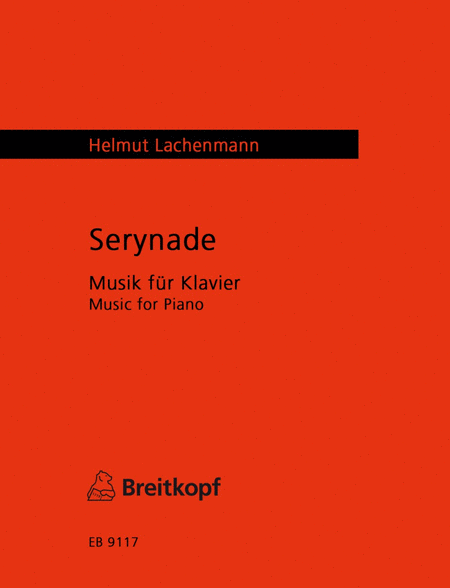
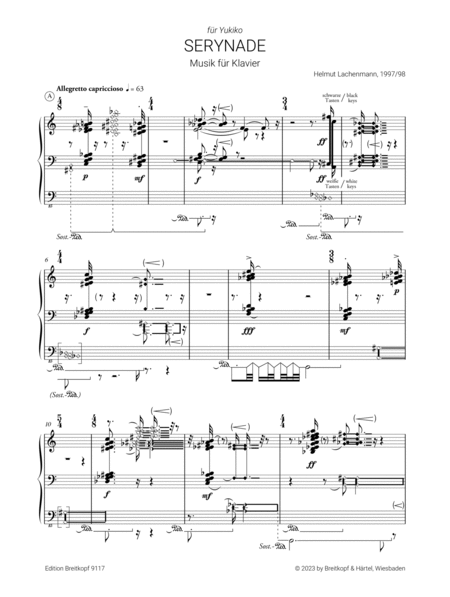
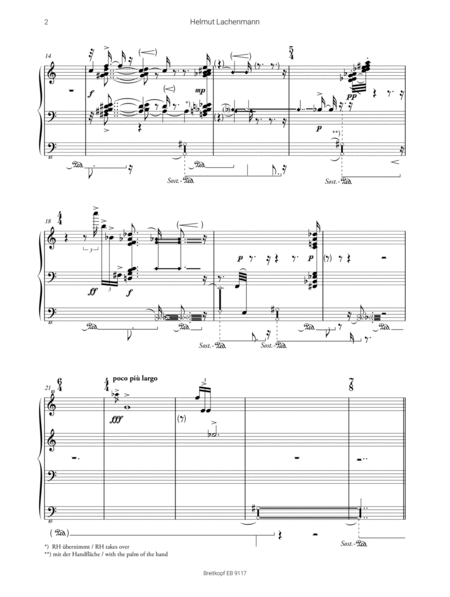
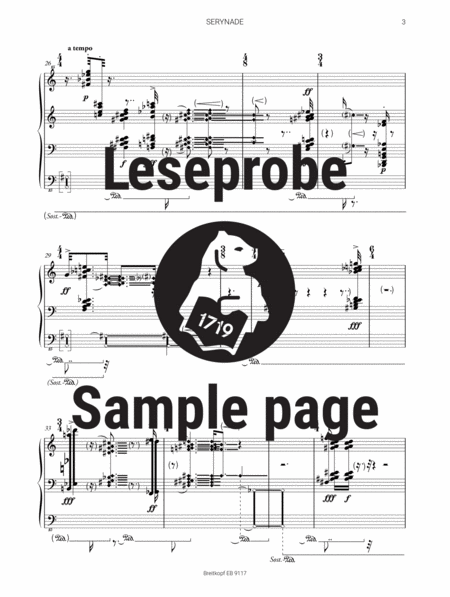
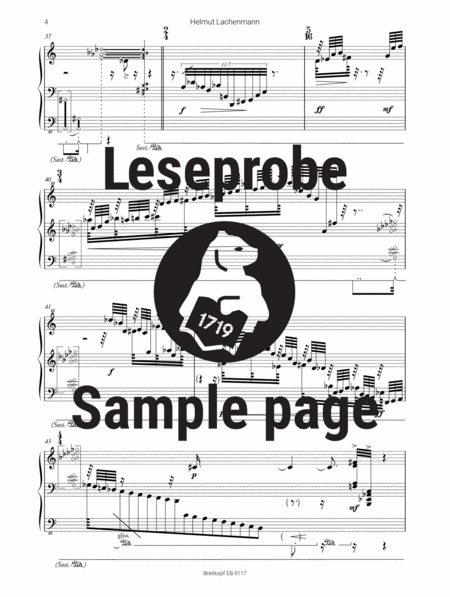
 Share
Share